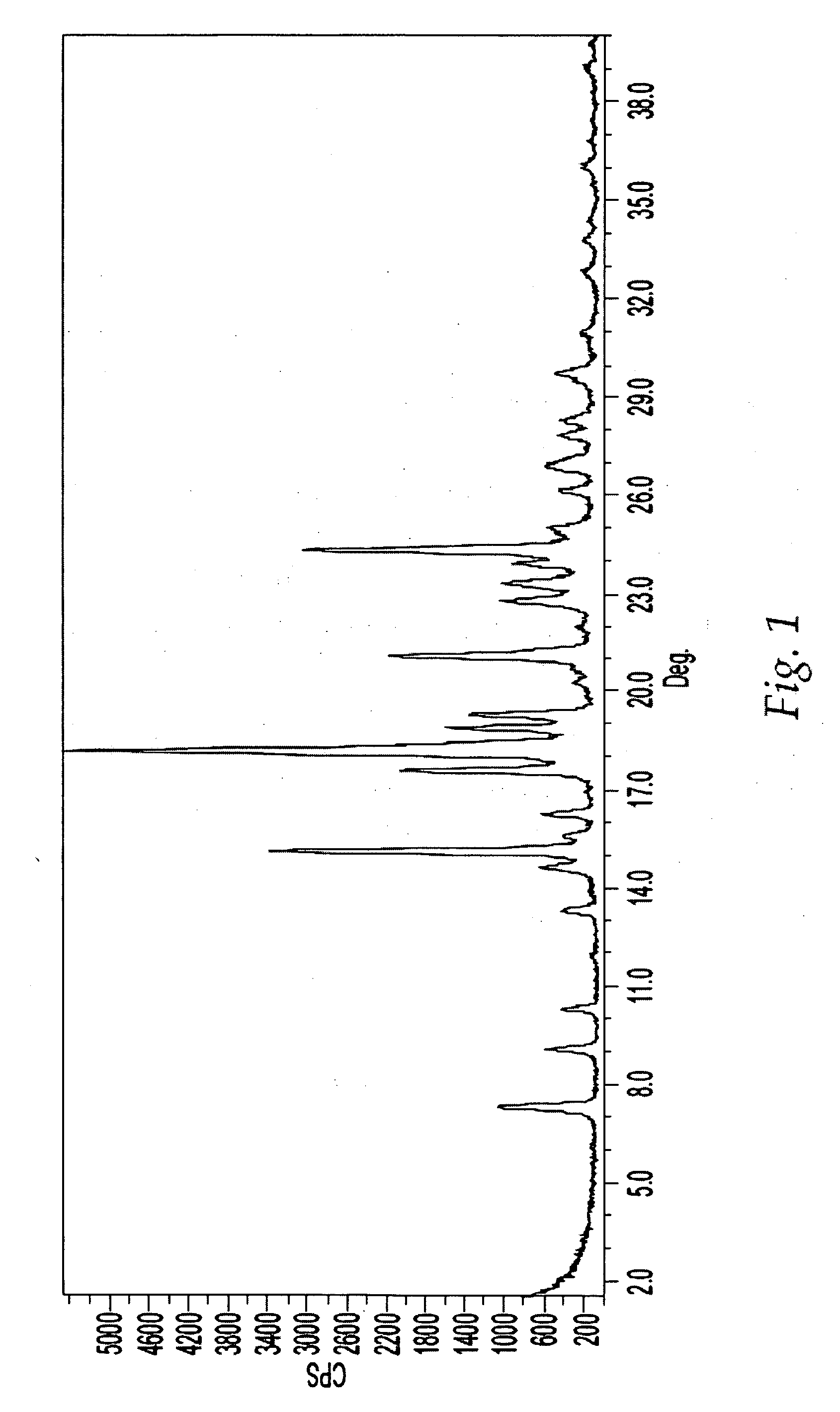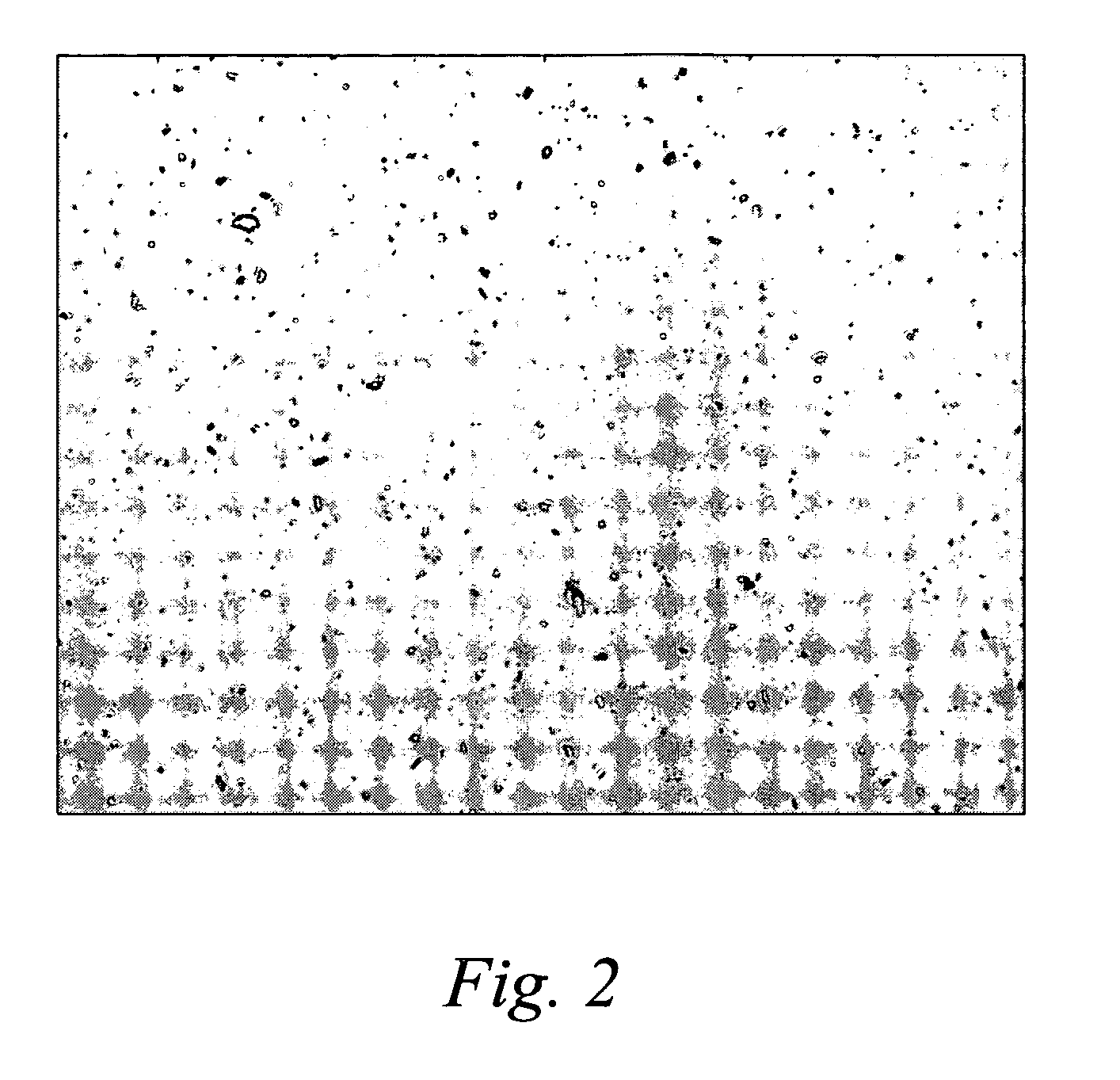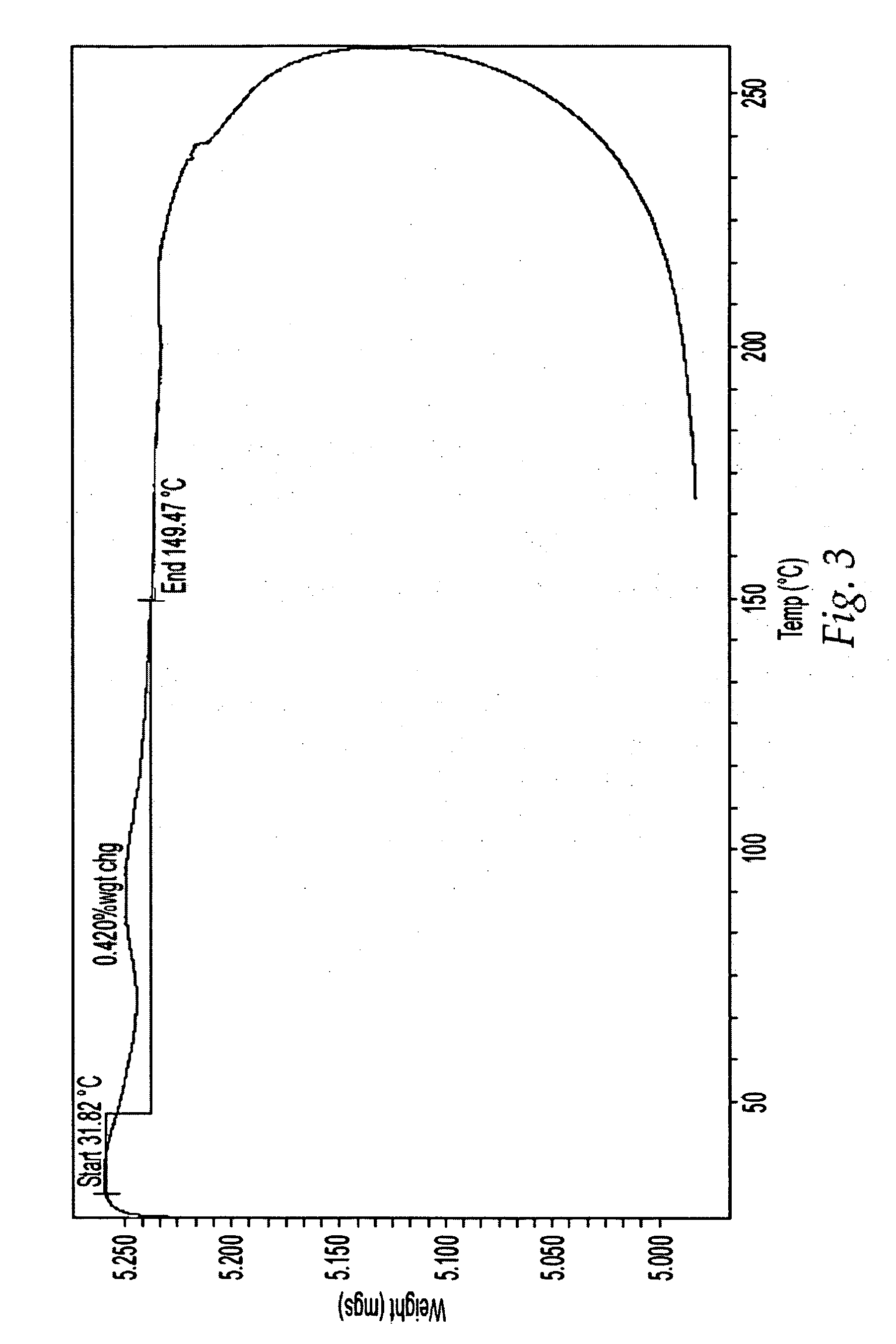Solid forms of a JNK inhibitor
a jun nterminal kinase and inhibitor technology, applied in the field of solid forms of jun nterminal kinase inhibitors, can solve the problems of tumor cell growth and transformation of jnk inhibitors, and achieve the effect of blocking tumor cell growth and transformation
- Summary
- Abstract
- Description
- Claims
- Application Information
AI Technical Summary
Benefits of technology
Problems solved by technology
Method used
Image
Examples
example 1
6.1 Example 1
[0277]
A. 3-{1-Perhydro-2H-pyran-2-yl-5-[1-(triphenylmethyl)(1,2,4-triazol-3-yl)]-1H-indazol-3-yl}phenol
[0278] To a stirred solution of 2-{3-bromo-5-[1-(triphenylmethyl)(1,2,4-triazol-3-yl)]-1H-indazoyl}perhydro-2H-pyran (3.22 g, 5.46 mmol) in dimethoxyethane (27.1 mL) was added 3-hydroxy phenylboronic acid (1.81 g, 8.22 mmol), dichloro[1,1′-bis(diphenylphosphino)ferrocene]palladium (0.447 g, 0.485 mmol), and potassium phosphate (5.78 g, 27.2 mmol) and the mixture was heated at reflux for about 48 h. The mixture was diluted with dichloromethane. The organic extracts were washed with saturated sodium bicarbonate, dried over anhydrous sodium sulfate, filtered and evaporated. Purification of the residue using column chromatography with 20-50% ethyl acetate / hexanes provided the product (3.16 g, 96%, yield). ES-MS (m / z) 362 [M+1(-Tr)]+.
B. 1-(5-(1H-1,2,4-Triazol-5-yl)(1H-indazol-3-yl))-3-(2-piperidylethoxy)benzene
[0279] Triphenylphosphine (0.694 g, 2.65 mmol), tetrahydrofur...
example 2
6.2 Example 2
[0280]
[0281] Step 1
[0282] A 600 L reactor was cleaned according to cGMP and purged with N2. The reactor was charged with DMF under an inert N2 atmosphere and 3-hydroxybenzaldehyde and K2CO3 were added. Chloroethyl piperidine-HCl was added at about 20 to about 28° C. over about 23 min and the reaction mixture was warmed to about 50° C. and stirred for about 15 hours at this temperature.
[0283] The reaction mixture was cooled to about 21° C. over about 75 min and the mixture was filtered (filtration time: about 45 min / about 2 bar). The filter cake was washed with TBME three times. The combined filtrates were quenched with half-sat. sodium carbonate solution causing the temperature to rise from about 20 to about 30° C. Water was added and the layers were separated. Due to the precipitation of salts, additional water was added to the aqueous layer. The original filter cake was washed with TBME three times. Each of the washings was used to extract the aqueous phase. Finally...
example 3
6.3 Example 3
[0310] Isolation of Form A
[0311] A 2-L 3-necked round bottom flask equipped with a mechanical stirrer, vacuum-distillation set-up and thermometer was charged with amorphous Compound 1 (98.4 g), THF (490 mL, 5.0 vol.), and acetonitrile (490 mL, 5.0 vol). The stirred slurry was heated to about 65-70° C. and the heating mantle was immediately removed once the target temperature of about 65-70° C. was reached. The stirred solution was then cooled to about 50-53° C. and seeded with Form A (0.95 g in 10 mL acetonitrile). The stirred slurry was then vacuum distilled to remove about 500 mL of distillate. The distillation was carried out a pressure of about 320 torr to about 600 torr with the temperature being maintained between about 40° C. and 55° C. The stirred slurry was then charged with acetonitrile (490 mL, 5.0 vol) followed by vacuum distillation to remove about 500 mL of distillate. This distillation was carried out a pressure of about 320 torr to about 600 torr with t...
PUM
| Property | Measurement | Unit |
|---|---|---|
| Melting point | aaaaa | aaaaa |
| Melting point | aaaaa | aaaaa |
| Melting point | aaaaa | aaaaa |
Abstract
Description
Claims
Application Information
 Login to View More
Login to View More - R&D
- Intellectual Property
- Life Sciences
- Materials
- Tech Scout
- Unparalleled Data Quality
- Higher Quality Content
- 60% Fewer Hallucinations
Browse by: Latest US Patents, China's latest patents, Technical Efficacy Thesaurus, Application Domain, Technology Topic, Popular Technical Reports.
© 2025 PatSnap. All rights reserved.Legal|Privacy policy|Modern Slavery Act Transparency Statement|Sitemap|About US| Contact US: help@patsnap.com



